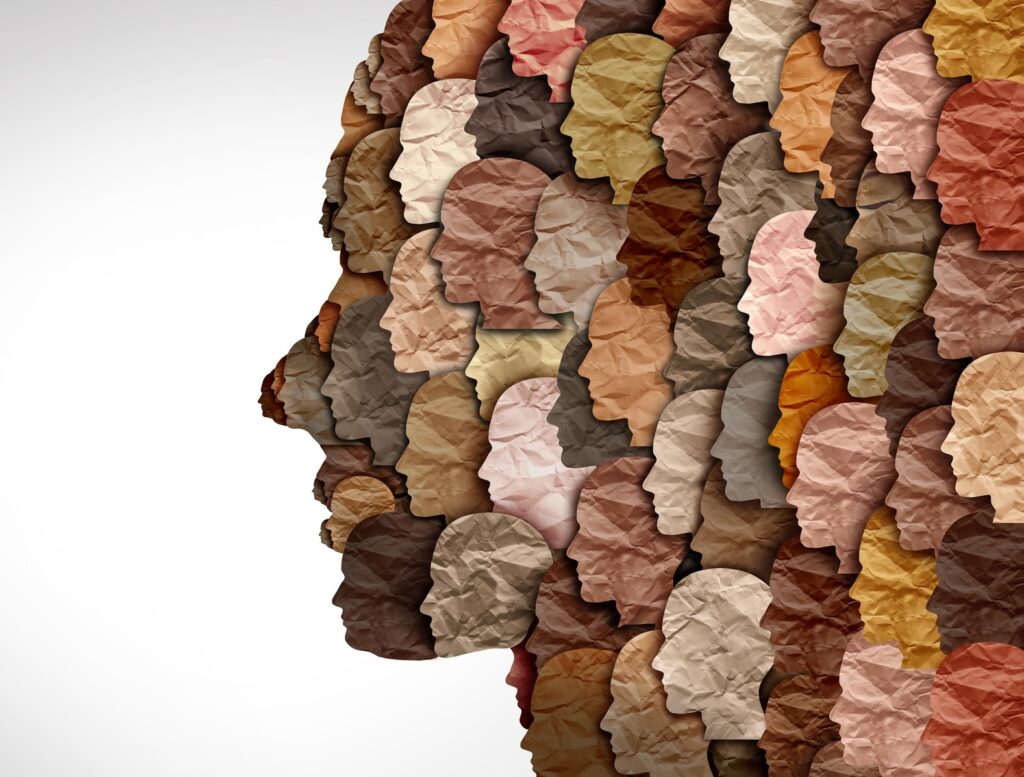BAME employees are often sceptical when their employers announce that they are supporting Black History Month or when they see a fantastic advert from their employer on TV extolling their ‘woke’ credentials. Their concern is that these diversity and inclusion efforts are literally only skin deep; that they are designed to look good on the outside without any real change on the inside.
They wonder why it is that the feelings of BAME employees only seem to count during the month of October, or when there is an initiative that requires visible evidence that the organisation has a diverse makeup of staff.
This can feel for employees that they are part of a performance art project, being forced to participate in ways which have disturbing undertones of the past. After all, only 60 years ago, there were still human zoos in Europe, where black people were displayed and jeered at. As alien as it may seem today, this occurred within a generation, and organisations may well have employees with parents or grandparents who still remember these horrific events.
Why you should support BAME employees each and every day
Every organisation wants their employees to be productive and willing to work to the best of their abilities, so as to enable the organisation to perform better and grow. This can only happen when employees feel that they can bring their whole selves to work. Employees mustn’t feel the need to mask who they are to fit into the organisation, or to make themselves seem more professional and more promotable. For example, how comfortable are your female black employees to wear their ‘natural’ hair to work without concern that their co-workers will play with it, or see it as a fetish?
Even vicarious traumatic stressors can have an equally detrimental impact on mental health as direct traumatic stressors.
Whilst there was a time when employers were only concerned with what happened at work, they now need to be able to recognise that what happens outside work is important to the employer as well. For instance, it has been shown that systemic racism can leave black people suffering from symptoms similar to PTSD. That prolonged trauma can also lead to poor mental health. As Dr Sharon Lambert explains: “even vicarious traumatic stressors can have an equally detrimental impact on mental health as direct traumatic stressors”.
Think back to July, when England men’s national football team lost in the final of the European Championship. Three young, black players – Bukayo Saka, Jadon Sancho, and Marcus Rashford – missed penalties in the decisive shootout, and were subjected to a torrent of racist abuse across social media platforms, with 1,622 abusive Tweets in the 24 hours that followed identified and removed.
What did you do to demonstrate your support to your black and minority ethnic employees last July, or did your silence (because you didn’t know what to say), just signal to them that you didn’t care?
As an employer, you must not only offer your support to your employees after ‘big’ events – such as the murder of George Floyd by a police officer in America, which sparked widespread protests and spearheaded the Black Lives Matter movement – but find a way to help your employees to always feel like they belong in your organisation.
An employee who feels traumatised before they get to work, due to their lived experience, will have their performance impacted. This problem can be exacerbated if their work takes them into contact with racist customers (a common problem in the NHS for example), or indifferent co-workers or managers. This has a negative impact on the organisation, workforce, and the company’s public image.
Why should it matter?
BAME employees must feel like they belong in your organisation, because it is the morally right thing to do, as well as being an important protective factor against poor mental health, which is costly to both the organisation and the individual.
The City Mental Health Alliance discovered that:
- 71% of white British respondents said they feel able to be themselves at work
- 54% of black people
- 55% of South Asian people
- 57% of East Asian people felt the same.
They also looked at the need to change to fit in and found this:
- 46% of South Asian, 45% of East Asian, and 43% of black employees feel that they need to change aspects of their behaviour compared to 27% of white British people.
- 52% of black, 49% of East Asian, 49% of South Asian,and 45% of mixed-race employees said that feelings of not fitting into work was a contributing factor to their poor mental health, compared to 34% of white British people.
These figures demonstrate that there is a need for organisations to seek support on how they can have an organisational culture where all employees feel safe to be who they are.
43% of black employees feel that they need to change aspects of their behaviour compared to 27% of white British people.
One action that employers could take, is when running events that explore individual cultures and experiences, ensuring that they are mandatory and that they don’t only occur in October. This signals to the workforce how seriously you want to have the optimal organisational culture for peak performance, and that you care about each and every one of them. Safe employees can achieve peak performance.
A few things to consider doing
- Understand and recognise the lived experience of your employees. Do not dismiss someone’s experiences as trivial – everyone processes trauma differently.
- Recognise the challenges faced by your employees.
- Be actively anti-racist and move away from diversity to meaningful inclusion.
- Provide psychological safety within the work environment. Do you provide safe spaces for your employees? When individuals feel safe at work, they can do their best work.
- Avoid diversity training and awareness courses that address DEI issues in isolation.
- Consider ensuring that your leadership team knows the individual and collective impact that they make and how they can help their employees align their individuality to the company mission and values.
- Leadership metrics should include anti-racist ones that speak to the desired culture.
When BAME employees feel like they belong in their workplaces, there is an increase in productivity and performance of the organisation; a reduction of burnout, trauma and poor mental health; and an increase of innovative solutions for your consumer/client base.
Diversity, equality, and inclusion are important leadership facets that should take place every day of the year. How are you ensuring that this takes place?
[cm_form form_id=’cm_65a14c3f5da64′]







